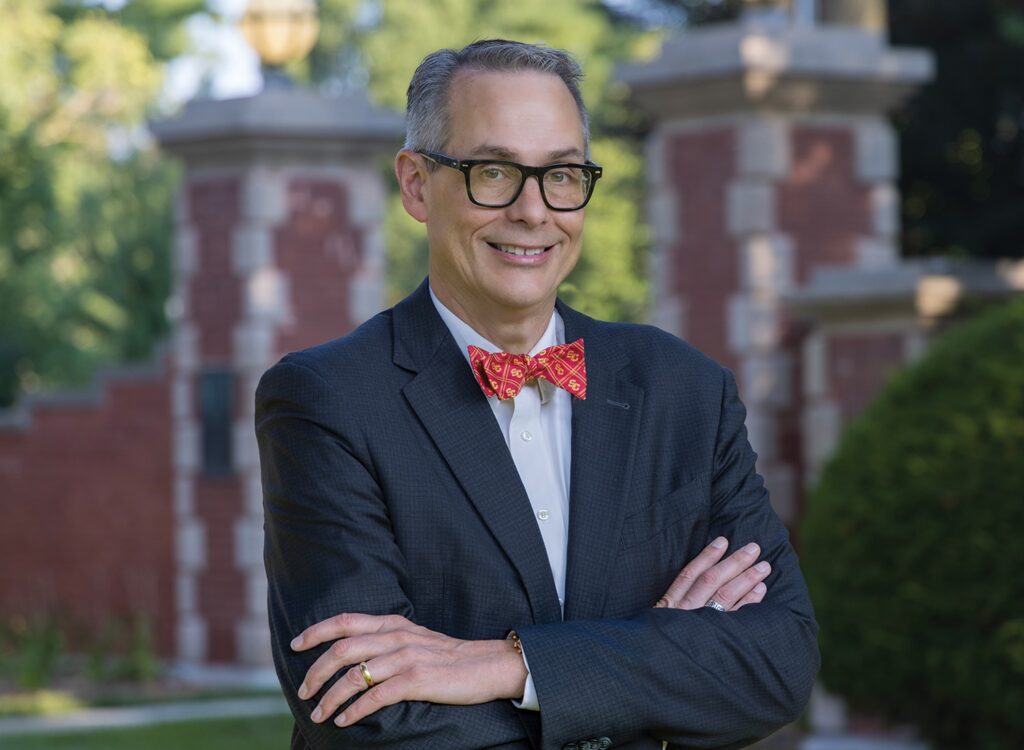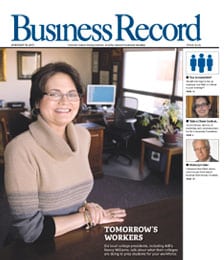Image-conscious Broadlawns launches campaign

Broadlawns Medical Center is about to roll out a public relations campaign to improve its image among health-care consumers – that is, if such blockbuster-implying words as “roll out” can be used to describe a no-frills marketing campaign pinched from a razor-thin discretionary budget.
Beginning in 2007, billboards and bus banners will introduce an addendum to the hospital’s long-standing tagline. It’s no longer just “caring for our community,” but also “caring for you.” The new approach individualizing the message is intended to appeal to people with health insurance who may be shopping around for providers, but who may have dismissed Broadlawns as an option because they mistakenly believed that it is “the county hospital that only takes care of the poor, or a place you can’t go if you have insurance,” said Jody Jenner, Broadlawns’ president and CEO since April.
At the heart of the new image campaign is what Jenner might call a perplexing irony. On one hand, the hospital has been nationally recognized for its leadership on Medicare and Medicaid funding issues and for the high quality of its family practice residency, disease management and education, and dental programs. At home, though, Broadlawns is often referred to as the health-care provider “of last resort,” the words used by researchers from George Washington University Medical Center, who assisted local community leaders in a 2005 study assessing the best way to serve uninsured Polk County residents.
The report, which warned that Broadlawns’ survival is tenuous without radical changes, isn’t far from the minds of Jenner and Mikki Stier, a senior vice president at Broadlawns who oversees the hospital’s governmental and public relations efforts, as they schedule meetings with CEOs and other business leaders to gain greater understanding in to how to best position the hospital to compete with Central Iowa’s dominant health-care providers, Iowa Health-Des Moines and Mercy Medical Center.
Like many of the leaders Jenner and Stier have recently been meeting with, Shelly Jordan has experienced a seminal shift in thinking about the hospital. Jordan has lived in Des Moines for about a decade and has driven past the hospital nearly every day, but she admitted that until she went to work there four months ago as the Broadlawns Medical Center Foundation’s director of fund development, she “didn’t have a clue” about the high level of care patients receive medical services provided there or the diverse population it serves.
“I had this vision of this real dingy building and people who either chose not work or were unable to work; that it was truly the pitiful, poor people’s hospital,” Jordan said. “Most [Broadlawns] patients have two or three jobs and are unable to afford health insurance, and are symptomatic of a larger epidemic in our society.”
It is true that Broadlawns serves more indigent and uninsured patients than any other health-care provider in Greater Des Moines, and that safety-net mission is sacrosanct. What’s not so well known is that two-thirds of the hospital’s patients are working Iowans who often juggle two or three jobs.
In addition to attracting new patients looking for a primary-care physician, Broadlawns also wants to keep those who have received charity care once their financial positions improve. Having more paying patients will improve Broadlawns’ bottom line, but the hospital is clearly the underdog in Des Moines’ extremely competitive and sophisticated health-care market.
If there’s a common thread in those conversations with high-level community leaders, it’s a lack of awareness of some of the cutting-edge services provided at Broadlawns, such as ankle replacement surgery, Jenner said. Dr. Vincent Mandracchia, a member of the Broadlawns staff, is one of only three surgeons in Des Moines certified by the manufacturer of the implant to perform the procedure. The hospital is also the undisputed leader in Central Iowa in providing mental health services, on both an inpatient and an outpatient basis.
“We have those top doctors,” Jenner said, noting that physicians with thriving practices have privileges at Broadlawns, just as they do at Iowa Health or Mercy.
What Broadlawns doesn’t have is the same financial cushion as the larger hospitals, which although structured as non-profit organizations, carry a more comfortable margin of cash. Broadlawns recently adopted an accountability standard to operate with a cushion of 20 days of operating expenses in cash, or about $5 million, in reserve. At larger hospitals, whether in Greater Des Moines or elsewhere in the nation, that cushion would be 10 to 15 times larger, Jenner said.
For a publicly funded hospital – about 40 percent of Broadlawns’ estimated $100 million annual budget comes from property taxes – to consider launching a marketing campaign represents a departure from traditional wisdom. “There is an implicit expectation among taxpayers that as a county hospital, we shouldn’t market and promote ourselves, but we need to, like any other hospital or business would,” Stier said. “We’ve never had the resources to talk about our image or people’s perception.”
Now, with Broadlawns in a fight for its survival, the public relations campaign has become vitally important. A 2001 estimate put the cost of modernizing the hospital at $80 million and the George Washington University study outlined the hospital’s physical plant deficiencies in excruciating detail.
Before a fund-raising drive can be launched, however “we need the confidence of the community,” Jenner said. “We truly are a viable, growing concern.”.







